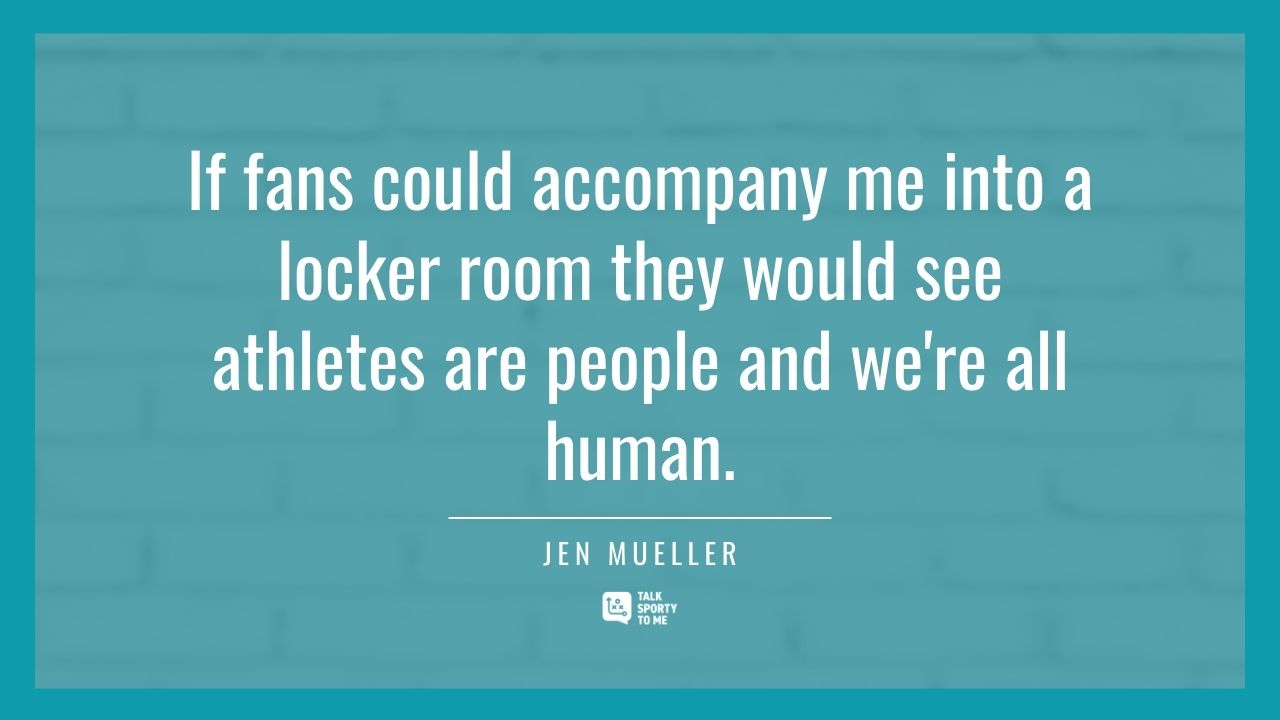The Lesson Every Leader Can Learn from a Locker Room
Aug 05, 2021I’m glad Simone Biles captured the attention of the world and shined a light on the importance of mental health. She helped spark conversation around the immense pressure athletes are under to perform and the stress that goes along with being the best in the world.
I’m encouraged fans were forced to look beyond Biles’ impressive personal accomplishments and see her as a human being.
I only wish every fan could accompany me into a locker room so you never forget athletes are people and we’re all human.
It’s a message I heard a decade before I set foot in a professional locker room when I wrote a letter to a local sportscaster I adored in Houston. I told her how much I loved sports and how I thought it was so cool she got to talk to athletes. I was surprised when Lisa Malosky took the time to write back. She encouraged me to pursue a career in sports before I even knew it was possible. She agreed the job was cool but she included these words I’m forever grateful for “Remember that athletes are people too.”
When I started going into locker rooms as part of my job it was surreal to talk to players I had watched on TV and interview guys who were household names. It was easy to be intimidated until I realized the best way to relate to them was to treat them as human beings - because athletes are people too.

For all the seemingly super-human abilities athletes possess they’re not immune from the same emotions you and I experience every day at work. You know how great it feels to have a good day at work. Bad days aren’t any fun. Your boss can frustrate the heck out of you and screwing up doesn’t feel good. Those are universal feelings that aren’t dictated by job titles, salaries or professions. And here’s the bigger point - if you can’t recognize that in athletes I wonder what else you’re missing with your own team.
When you fail to see people as human beings and categorize them based on salary or title you’ve created a barrier that affects your ability to communicate and connect. It doesn’t matter if you’re dealing with athletes, CEO’s, an intern or a restaurant server. Kindness and empathy start with identifying what you have in common. And you have more in common with athletes than you might realize.
Being in a locker room isn’t what most people think. I know I’ve disappointed more than one fan when I describe it as a work environment. I know they’re looking for something that’s more glamorous and sexy, but the truth is, the teams that I cover have a lot in common with the team of people you work with. (Although your office probably smells better.)
If you could go into a locker room with me you would discover there are introverts and extroverts. Natural leaders, emerging leaders and people from different backgrounds. They’re asked to give their individual best to help the team succeed. It’s no different from any corporate environment or traditional workplace.
Being in a locker room has made me a better leader because I’ve learned to relate to people I didn’t think I had much in common with. I see the human side, not the superhero side of your favorite athletes.
So why does any of this matter?
We live in a world where kindness is in short supply and it’s easy to forget we’re all human. The way you talk about sports and athletes sets the tone for other conversations.
If you want to complain about the over-paid jerk who cost you the fantasy football title or berate the 20-year-old who missed the game-winning free throw, I can only imagine how little patience or understanding you show colleagues/teammates who have a bad day or inconvenience you.
Meanwhile, if you’re the gracious fan who realizes everyone has bad days at work and no one feels worse than the person who just let their team down, I can picture wanting to work alongside of you because of your compassion for others.
You can use sports conversations to shape narratives at work. It helps if you start by seeing athletes and the people you work with for what they really are – human beings.





